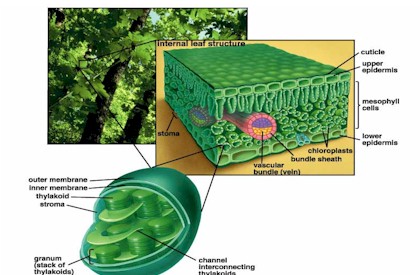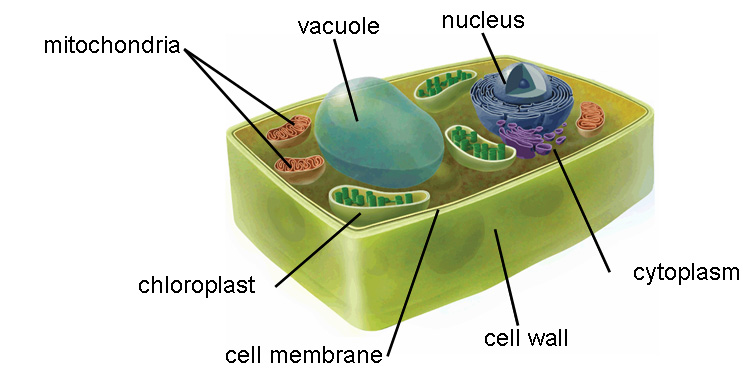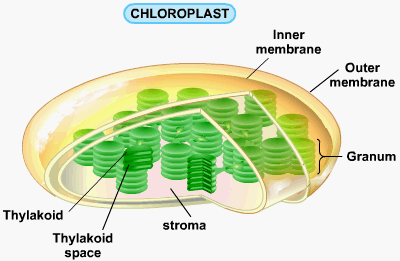

Most plants photosynthesize using leaves. Leaves are plant organs that have become highly adapted to carry out photosynthesis. Take a look at the image on the top left. The structure of a leaf is thin and flat, in order to increase surface area and therefore increase absorption of light. Leaves have developed a waxy, transparent cuticle that protects the leaf without inhibiting light absorption, as well as upper and lower epidermis cells that are thin and transparent which allows more light to reach the mesophyll cells. Photosynthesis occurs in the mesophyll cells. As you can see, there are two layers of mesophyll cells: the one directly under the upper epidermis, which appears to be more organized, and the layer directly below it, which appears to be more random. Th "organized" layer is the palisade mesophyll, and the more "random" one is called the spongy mesophyll. Cells in the spongy mesophyll are spaced out, allowing air spaces for carbon dioxide to diffuse through the leaf. The cells in the palisade mesophyll contain many chloroplasts to further increase absorption of sunlight.
So what is a chloroplast? First, let's look at the diagram on the top right. This diagram shows a typical, rather unspecialized plant cell. Any plant cell contains a rigid cell wall made of cellulose as well as a lipid cell membrane. The cytoplasm, or cytosol, is the jelly-like liquid that fills the cell and hold all the organelles in place. The nucleus, as you probably know, is where all the cell's genetic information is stored in the form of nucleic acids (in this case, DNA). An organelle unique to plant cells is the vacuole. It is a large "sack" that is filled with mostly water, but also food, waste, and other chemicals. The vacuole can be "inflated" or "deflated" depending on what type of environment the cell is in, and is key to maintaining proper turgor pressure for the cell (making sure it doesn't crumple or explode). Mitochondria, which are present in both plant and animal cells, contain a bit of their own DNA and are responsible for processing energy. They are essentially the "powerhouses" of the cell. There are lots more organelles in plant cells, but we are going to focus primarily on the chloroplasts. Scroll down for some more diagrams and specific info on chloroplasts.

